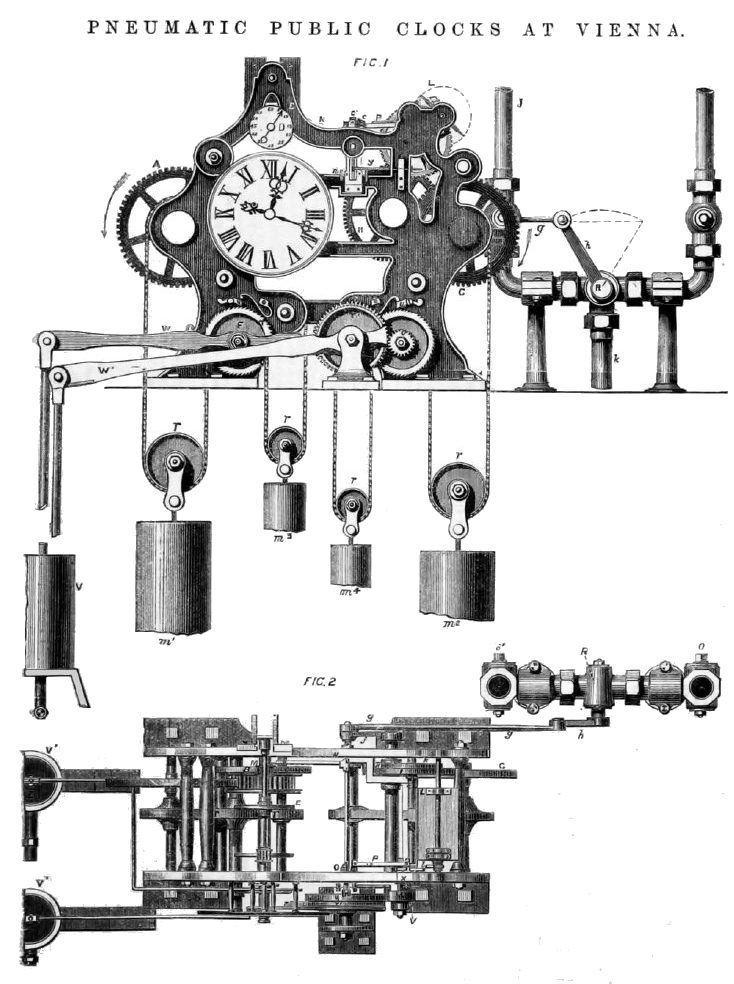Gallery opened 4 Mar 2018
Updated: 28 Oct 2022
Schottenring pic added




The Vienna Pneumatic Clock Network |
Gallery opened 4 Mar 2018 |
The Paris Pneumatic Clock Network, which opened in 1880 and closed in 1927 is (relatively) well-known. However it had a less celebrated predecessor in the city of Vienna, the capital of Austria. The Viennese system was described in Engineering for 29th June 1877, and most of the information here comes from that source. The Paris system is described on this page.
The inventor and originator was Ingenieur Carl Albert Mayrhofer; no biographical details have been discovered so far. He set up a central clock, which he called his 'normal Uhr'.
Air was compressed to approximately two atmospheres (29.4 psi) by a double-acting pump driven by a Lenoir gas-engine, and delivered into a cylindrical reservoir made of boiler plate, standing 10 feet high by 4 feet diameter. The slave clock would operate satisfactorily from pressures between 5 and 15 psi, which meant that the gas engine could be switched off for up to 12 hours for maintenance.
The street mains consisted of lead pipe with a 1 inch internal diameter, which gave sufficent air to operate several hundred slave clocks. The pipes were enclosed in u-section bricks for mechanical protection, and apparently also to protect it against mice. (Do mice really gnaw through lead pipes?) In June 1877 (the date of the Engineering article) only ten slave clocks were connected to the 'normal Uhr' but it was said arrangements were being made to connect a much large number, including many in the famous Ring-Strasse. The system had been in use for 4 months, "and has given great satisfaction."
The system was described in Popular Science for December 1877, p251, where it was also stated that the system had been in operation for 4 months "without a solitary hitch". It is very likely the Popular Science article (which was rather short) was distilled from the Engineering article.
 | Left: The Vienna distributing clock
|
 | Left: The first clock at Schottenring, Vienna: 1877
|
You may have concluded by now that Viktor Popp unscrupulously plundered Mayrhofer's technology and fled to Paris. This does not seem to be the case. Mayrhofer took out three USA patents:
There is a document describing public time keeping in Vienna, called The City and the Clock.

  
|